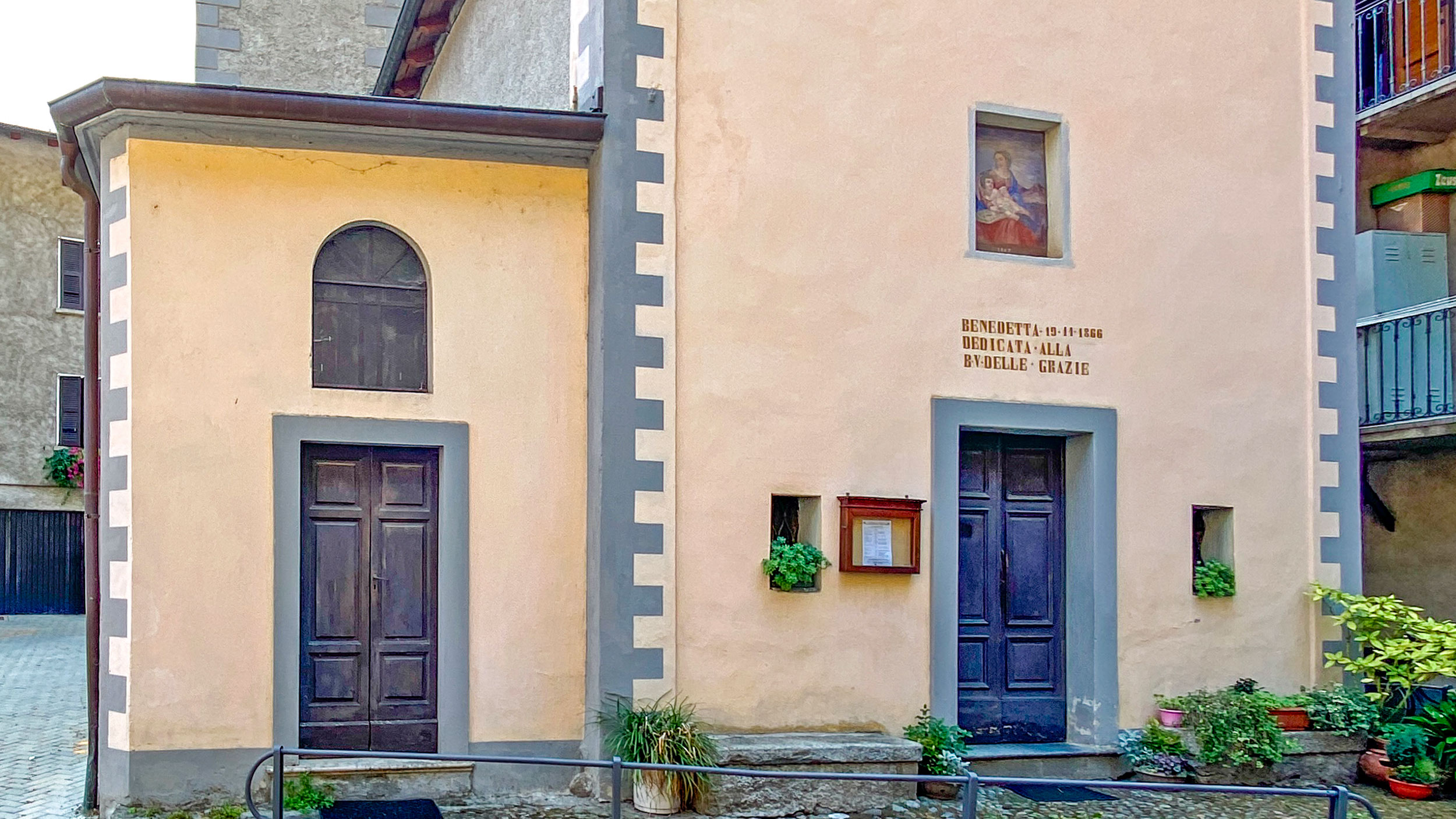Street Cugnolo - Paniga, Morbegno (SO)
Built in the late 1970s, the gèsa növa [new church] of Paniga was designed by the renowned architect Luigi Caccia Dominioni (1913-2016), Milanese by birth but with very strong family ties to Valtellina and particularly to Morbegno, where he spent a great deal of his childhood.
A refined architect and designer with a long award-studded career, he designed the Vanoni Library and the church of Saint Joseph in Morbegno.
The new church of Our Lady of Graces of Paniga stands isolated in a green setting, integrated into the landscape thanks to the use of construction materials from the local tradition: the walls are finished in large river stones and the roof is made of natural stone shingles known as piode. The squarish severity of the wall giving onto the road is softened by the slight curve of the main façade, flanked by inviting roofed spaces. The discerning balance of recesses and protruding volumes, curved and straight walls, is a distinctive trait of Caccia Dominioni’s creations.
The interior stone walls shape a fluid space, interrupted only by four cement columns delimiting the area for the celebrant. The baptismal font is positioned peripherally, near the door to the sacristy. The openings were very carefully conceived: the side windows near the ceiling are the Stations of the Cross converging on the large corner stained-glass wall behind the altar.
The liturgical space is bathed in warm light filtering through the splendid multicolored stained-glass windows, designed by the painter Francesco Radaelli, Betharram father who uses the expressivity of colors and forms to convey elements of faith.
The artist took inspiration from a verse in the Bible: “Except a corn of wheat fall into the ground and die, it abideth alone: but if it die, it bringeth forth much fruit” (John 12:24). The stained glass windows of the Via Crucis illustrate the path of the yellow kernel of wheat covered by earth. Initially everything seems to be lost in the darkness of the soil, but the seed slowly finds a way to generate new life, it sprouts and transforms into the plant represented in the corner window, signed and dated “Radaelli 73”.
In this modern setting, the ties to the past are sealed by the dedication, which is the same as that for the preexisting church in the heart of the frazione, which is also the source of the painting of the Nursing Madonna venerated near the entrance. This is where flowers and candles are concentrated; this is where the faithful go immediately upon entering the church for a moment of personal prayer.







